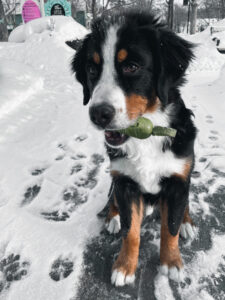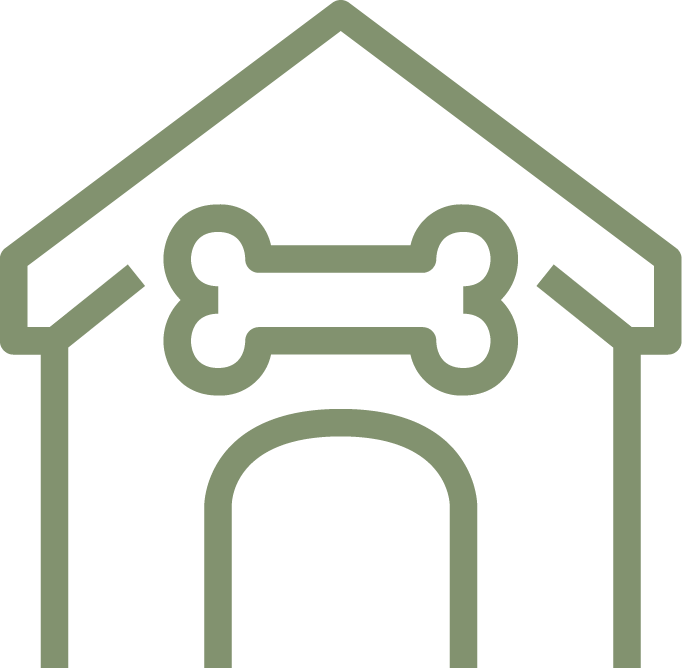Let’s Talk About Poop…
“Let’s talk about poop,” I said to Girlfriend earlier today. She rolled her eyes and gave me with a withering look. “What happened this time?” she asked.
It hadn’t occurred to me until just then how often I speak with Girlfriend about poop. It’s an alarming amount quite honestly. There are a lot of subjects that seem top of mind these days: Covid, election politics, winter storms, state of the economy, maybe a little more covid. But the absolute favorite topic of conversation in my household lately is, you guessed it, poop. Not our poop; we’re not weirdos. But instead, we find ourselves frequently discussing the poop of our 5 month old puppy, Dawson, the namesake of this blog. We chart it, examine it, spread it out, look at it- both for color and consistency, of course. All jokes aside, we are about one step away from swirling it in a glass to check for flavor profiles. Surfing back through text records on my phone you will see an almost constant thread of neat, time-stamped recordings of fecal-frequencies for our furry friend. Since Dawson came into our lives we have become sommeliers of the smelly, proctors of potty, Dictators of the doody, and … well you get it… we talk about poo a whole lot.
 Some of you reading this are quite possibly thinking to yourselves,” This guy is nuts. He’s absolutely bat-$hit.” There aint no way, on earth or any other planet, you’re dedicating any amount of free-time to sifting through your dog’s waste. To you sir, I say – just wait! You will one day join me in scat-sifting. And for those of you who have your very own tiny-terror of teeth & tail at home, you know that what I’m saying is 100% correct. What shocks me is how no one warned me about this before I brought my puppy home.
Some of you reading this are quite possibly thinking to yourselves,” This guy is nuts. He’s absolutely bat-$hit.” There aint no way, on earth or any other planet, you’re dedicating any amount of free-time to sifting through your dog’s waste. To you sir, I say – just wait! You will one day join me in scat-sifting. And for those of you who have your very own tiny-terror of teeth & tail at home, you know that what I’m saying is 100% correct. What shocks me is how no one warned me about this before I brought my puppy home.
As I mentioned in my last blog, there are a number of ways your puppy will communicate with you and it’s really up to you as the pet-parent to figure out what he or she is saying. Your dog is ready to tell you anything you want to know if you are ready to listen. Body language is always the first thing you begin to pick up on. I assume this is mostly because it’s the more familiar form of pet-to-parent communication – and also because it hasn’t yet occurred to you that touching turds should take up the better part of an afternoon. Shoot, 70% of communication between humans is non-verbal, so picking up body language from your pup is no big deal. Body language can be anything from tail position, the way he is laying, leaning, standing or sitting. It can be the way his head tilts from side to side like the old dog from the RCA Records – that’s a joke for you Baby Boomers reading this. But really, you can tell as much from the way your pup lays as where he lays. Right now your dog is probably trying to communicate with you and you’re too busy reading this silly blog.
After body language you will begin to learn the subtle tells of your dog’s sounds. When I say sounds I mean whining, whimpering, woofing and even the deadly, super serious, and often catastrophic sound of silence. This is usually accompanied by a curse, a quick scan of the room, and then calling across the house to your significant other, “Honey, is the dog with you?”
Like body language, learning these little yips and yaps is fairly easy and with some patience and diligence on your part you will come to know what each means. I lucked out in one regard with my puppy: he’s not a barker. In fact, he barely makes any noise at all which is both fantastic and frightening at the same time. Instead of a bark he has a long low groan of annoyance which, if I am being honest, sounds suspiciously judgmental but is often caused by the removal from his mouth of any non-chew-appropriate item.
All these cues are important and necessary to learn if you want a happy, obedient and healthy pet. But, without question, the absolute most crucial and important communication style of your new pup is what he’s doing with his butt.
 Animals, even the domesticated kind like dogs and cats, have an instinct to hide their pain and discomfort. This is their natural way of avoiding attention from predators. In the wild, and in pack-life, weakness is a sign of, well, weakness. And pain, despite what your personal trainer may tell you, is not the way to gains. In the wild, a dog showing signs of injury or illness is likely to lose standing in their pack and become the target of larger predators. Clearly these concerns are no longer relevant in the jungle of your 3rd floor condo but your stoic, courageous pup isn’t about to start sobbing when he has a belly ache and he can’t exactly ask for tums.
Animals, even the domesticated kind like dogs and cats, have an instinct to hide their pain and discomfort. This is their natural way of avoiding attention from predators. In the wild, and in pack-life, weakness is a sign of, well, weakness. And pain, despite what your personal trainer may tell you, is not the way to gains. In the wild, a dog showing signs of injury or illness is likely to lose standing in their pack and become the target of larger predators. Clearly these concerns are no longer relevant in the jungle of your 3rd floor condo but your stoic, courageous pup isn’t about to start sobbing when he has a belly ache and he can’t exactly ask for tums.
And that brings us full circle right back to poop. Your pup’s potty is the first opportunity you have to notice when there is a problem. Where poop is concerned you want to look for color, shape, consistency, size and content. Yes, all of these are important.
Color – you are looking for a chocolaty brown.
Shape – think of very small logs. Fun, right?!
Consistency – you want playdough here. Only one way to check on this one…
Size – A little hard to put your thumb on this, not that you’d want to, but go with “is it the same size as the other day or did it suddenly get bigger or smaller?”
Content – Just poop is always the goal, but check for foreign items.
So, what exactly are you looking for? Honestly, it’s a little bit hard to say but it could be anything. You will notice when something goes wrong. Dark or black poop can mean blood. Mucus can mean infection or inflammation. Watery or soft means upset stomach and potential allergens or not enough fiber. A Lego space-man in the poop means your dog ate a Lego space-man. You’re kids need to clean up better – refer to Blog post #1. Too much poop can also be an issue. Girlfriend and I recently increased our pup’s diet and along with this has come a sudden increase in poo frequency and size – something this writer found out the hard way, not un-ironically as he was writing this very blog post. (short pause, curtain goes down, sounds of carpet cleaning and mild cursing comes from stage-left)
So what’s the message to all of this? What am I trying to tell you? Am I telling all of you to become scatoligists ?(yes, that’s the actual name for someone who studies poop professionally) Am I creating a small army of over-zealous poo pushers… I’m really grasping for alliterative puns at this point. Honestly, I just want you to avoid some of the pitfalls and hurdles I have faced in the last 12 weeks of owning a puppy. Yes, he’s cute. Yes, I love him. But it’s because of that cuteness and love that each day, at regular intervals of about 3 and a half hours, I walk outside in the cold weather and the snow and carefully examine small brown smelly log-shaped pieces of waste while my dog, and quite a few of the passers-by, watch me with a look of growing alarm.
Happy treasure hunting, readers.



